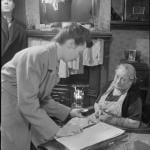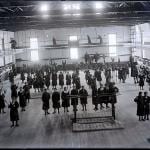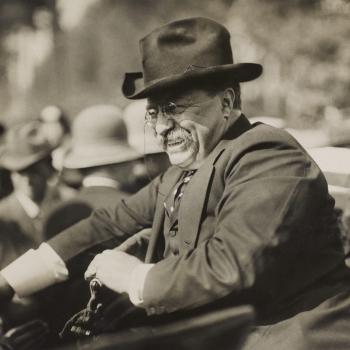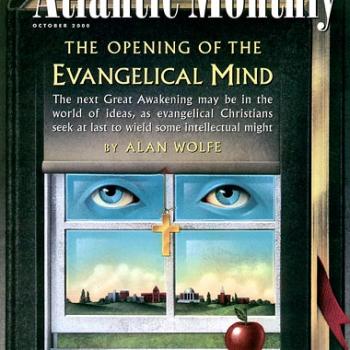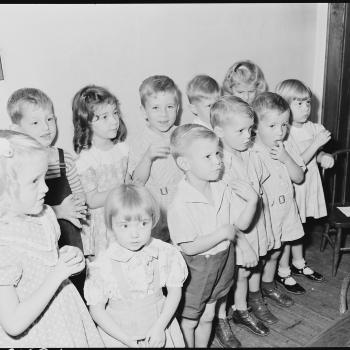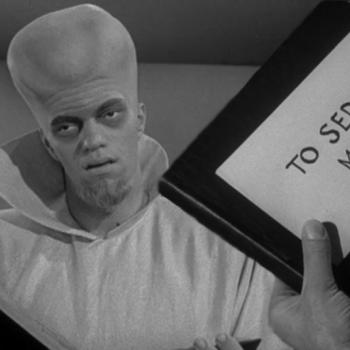Those were the days:
At the beginning of the twentieth century this distinction between mainline and evangelical Protestantism did not exist. To be a member or officer in one of the largest and oldest American Protestant denominations was to be an evangelical. One way to illustrate this point is to look at the sort of statements issued in 1908 at the founding of the Federal Council of Churches. This body, of course, is rarely considered one of the institutions or agencies of evangelicalism and for good reason. It is the forerunner of the National Council of Churches, the ecumenical agency of the mainline Protestants whom contemporary evangelicals suspect of having abandoned the Bible, evangelism, or both. The Federal Council is also an interesting case of evangelical identity because it embodied, even if in a moderate manner, the ideals of the Social Gospel. One of its most notable early items of business was the “social creed of the churches,” a ten-point platform designed to ease the tensions between labor and capital produced by a rapidly industrializing economy. The Social Gospel orientation of the FCC is significant because ever since the early twentieth century evangelicals are supposed to be different from mainline Protestants because the former hold on to an individual gospel while the latter put the salvation of society close to if not above evangelism and missions.
Yet, the delegates who gathered in early December, 1908 at Philadelphia’s Academy of Music for the first conference of the Federal Council believed they were engaged in an evangelical enterprise. One reason for thinking this was that the gathering heard a report from J. Wilbur Chapman, a Presbyterian revivalist and a colleague of Dwight L. Moody, speak on the importance of evangelism. Another was that some of those who gave speeches used the e-word interchangeably with the work of the new agency, even if they were not as culturally sensitive as their successors would be. For instance, in speaking on “The Church and the Immigrant,” Ozora S. Davis told delegates that one of the purposes of the Federal Council was to “determine how far there may be in modern conditions a unique demand for a federated endeavor on the part of the evangelical churches in attacking the problem presented by immigration.” Then there were the various initiatives of the Council that tapped typically evangelical mores, such as opposing divorce, Sabbath-breaking, the consumption of alcohol, and “preserving and guarding” the family “from anything that may defile its purity and choke its flow.” Even in the report of the executive committee members could not resist thinking of the new organization as an evangelical endeavor such as when it described the joy with which the “spirit. . . is a broad in the Protestant and evangelical churches of our country in connection with the movement represented by the Council.”
Of course, the men responsible for the Federal Council were using evangelical in an older sense, and that is precisely the point. For Protestants at the turn of the twentieth century to be part of mainline Protestantism was to be evangelical. . . . The evangelical roots and identity of mainline Protestantism also shows up in the way later mainstream Protestants, who wrote after the modernist-fundamentalist controversy and so know something about a difference between conservative and liberal Protestantism, would continue to locate the origins of the mainline denominations’ cooperative efforts in the revivals for which evangelicals were famous. In his history of the American Protestant ecumenical movement, Samuel McCrea Cavert conceded that revivalism, “which was the dominant form of religious activity in the nineteenth century,” had been an important ingredient in the formation of the Protestant mainstream. To be sure, “conflicting views about revivalistic practices and ideas were sometimes a source of schism.” But Cavert went on to explain that because “revivals largely ignored denominational differences, emphasizing only what was relevant to conversion and personal holiness,” they “fostered a common body of Protestant sentiment.” John A. Hutchison, a philosophy professor at the College of Wooster who went on to chair the philosophy department at Columbia University, wrote the first institutional history of the Federal Council and was more direct than Cavert in linking the ties between evangelical and mainline Protestantism in the United States. One of the first manifestations of the sort of ecumenism that would characterize the twentieth-century mainline churches was, in Hutchison’s estimation, the First Great Awakening. Here “strict denominational lines were blurred and a common religious pattern . . . was begun.” Hutchison also credited these revivals with stimulating an interest in the kind of “moral and social problems” for which twentieth-century mainline Protestantism was well known and that the Federal Council nurtured.
The point here is not about the theological origins of the mainline Protestant churches or the degree to which they were or are conservative or liberal. Instead, it is about the way the word evangelical was used before 1950. Whether a church, minister or member was actually liberal or conservative, whether the Bible was inerrant or simply inspired, whether Christ’s return was imminent or immanent, American Protestants thought of themselves as evangelical, that is, as members of communions that were Trinitarian and possessed roots that went back to the Protestant Reformation. This shared use of evangelical explains why within five years of each other one of the greatest defenders of Calvinism and one of the foremost proponents of modernism could both claim the evangelical label for very different ends. In 1920, in one of the last pieces he would write, Benjamin Warfield, the venerable defender of Calvinism at Princeton Seminary, wrote a piece in opposition to the ecumenical drift that he believed was ruining American Protestantism. The essay was entitled, “In Behalf of Evangelical Religion,” and the object of Warfield’s penetrating intellect was “The Plan of Union for Evangelical Churches,” a scheme developed after World War I to bring many of the denominations in the Federal Council into closer relationship. The creedal statement that was supposed to provide the basis of union was lacking, Warfield argued, because it said nothing about the Trinity, the deity of Christ or the Holy Spirit. He conceded that these were not “distinctively evangelical truths, but the most fundamental truths of common historical Christianity.” But Warfield’s point was that if this plan was to unite evangelical churches it should contain evangelical beliefs.
Part of the reason, however, why the proposed plan for uniting the evangelical churches was vague on evangelical belief was that liberal Protestant theologians, such as Shailer Mathews, the dean of the University of Chicago Divinity School, could use the word to describe his own theological position. In 1924 he wrote a book, The Faith of Modernism, that was designed in part to respond to arguments against liberalism made by the likes of Warfield’s colleague, J. Gresham Machen. As much as contemporary usage places evangelical and liberal in different categories, Mathews used the word evangelical in an older sense, one that had little of Warfield’s confessional precision. “Modernists,” Mathews asserted, “as a class are evangelical Christians. That is, they accept Jesus Christ as the revelation of a Savior God.” He added that briefly put, “the use of scientific, historical, social method in understanding and applying evangelical Christianity to the needs of living persons, is modernism.” Of course, later evangelical theologians would take issue with Mathews’ definition of evangelicalism. And again the point of this exercise is not to decide whether the University of Chicago or Princeton Seminary were better sources of Christian truth. It is, simply, to show that the word evangelical throughout the majority of American history did not have the significance it does today. In fact, if the experts who conduct opinion polls were asking during the 1920s the same questions they do today about Americans who identify themselves as evangelical, both Benjamin Warfield and Shailer Mathews would answer the same way. (Deconstructing Evangelicalism)

